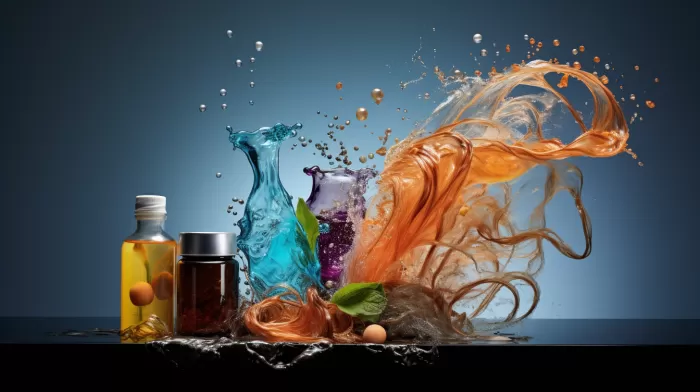Did you know that the very products you use to clean your hair and body could be delivering dangerous toxins into your system? Many people don’t pay attention to the ingredients of their soaps, shampoos, and conditioners, or they assume that because these products wash off, they pose no long-term risks. The sad truth is that transdermal absorption of harmful substances from these products is a real and potentially serious health concern.
Toxins Hiding in Plain Sight
Here are some common, dangerous ingredients found in many health and beauty products that you should look out for:
- Parabens: These substances, often used as a preservative to extend the shelf life of cosmetic products, have been linked to hormonal disruptions, allergies, increased estrogen levels, and even cancer. They have been found in breast cancer tumors and have also been shown to mimic estrogen, which can play a role in breast cancer. Parabens have also been linked to skin irritation, contact dermatitis, and rosacea in people with paraben allergies.
-
Quaternium-15: This chemical, found in some hair and body products, is known to release formaldehyde, a known skin, eye, and respiratory irritant. It has also been linked to cancer, particularly leukemia, and can cause contact dermatitis in people allergic to it.
-
Artificial Fragrances: Though they may make a product smell nice, fragrances can contain thousands of ingredients, many of which are allergenic, toxic, or even carcinogenic. Exposure to ingredients in fragrances has been reported to cause headaches, dizziness, rashes, coughing, nausea, skin irritation, and can impair the central nervous system, causing depression, hyperactivity, irritability, and other behavioral issues.
-
Methylisothiazoline (MIT): This substance, found in shampoos such as Head & Shoulders, Suave, Pantene, Clairol, and others, has been linked to neurological damage in research conducted by the National Institutes of Health. It can increase the risk of brain defects in unborn children and may lead to Alzheimer’s and other neurological disorders.
-
Sodium Lauryl Sulfate (SLS) and Sodium Laureth Sulfate (SLES): These foaming agents, found in nearly every brand of shampoo and body wash – as well as in car washes – have been linked to skin and eye irritation, endocrine disruption, possible genetic mutations, and cancer.
-
Glycerol Propylene Glycol: This ingredient, used in some shampoos, is closely related to car antifreeze and can cause dermatitis, dry skin, rashes, kidney and liver issues, and cell membrane damage.
Hidden Dangers
In addition to the known harmful ingredients listed above, there are other dangers lurking in health and beauty products that you may not be aware of:
- 1,4-Dioxane: Though not listed as an ingredient on product labels, this chemical contaminant has been found in 22% of products in the Environmental Working Group’s Skin Deep database. It is a byproduct of the ethoxylation process, which makes harsh cleaning ingredients gentler, but has been linked to health issues such as cancer and endocrine disruption.
-
Nitrosamines: These substances, which can be formed when cocamide DEA (a foaming agent in shampoos) reacts with nitrosating agents, have been found in over half of all body care products and are classified as potent carcinogens that can penetrate the skin.
-
Phenylenediamine (PPD): This chemical, present in more than two-thirds of hair dyes, is known to be toxic to the immune system, skin, nervous system, respiratory system, liver, and kidneys.
Protecting Yourself
The best way to keep yourself safe from toxins in health and beauty products is to seek out options that contain fewer harmful ingredients, or better yet, are completely toxin-free. This might require some additional searching, but several online retailers and health food stores can help you locate safer alternatives.
Another helpful approach is to add beneficial ingredients to your existing shampoos and other products. This might include incorporating herbal extracts that are high in antioxidants, which can protect against oxidative and inflammatory damage.
Lastly, adopting healthy detoxification practices can help safeguard your health by eliminating toxins and harmful waste products from your body. Consuming a diet rich in protective ingredients such as green tea extract, zinc, selenium, honokiol extract, tocopherols, vitamin C, and alpha-lipoic acid can help support your body’s natural detoxification process. Engaging in regular exercise and seasonal detox regimens can also go a long way toward ensuring your well-being over the long term.



